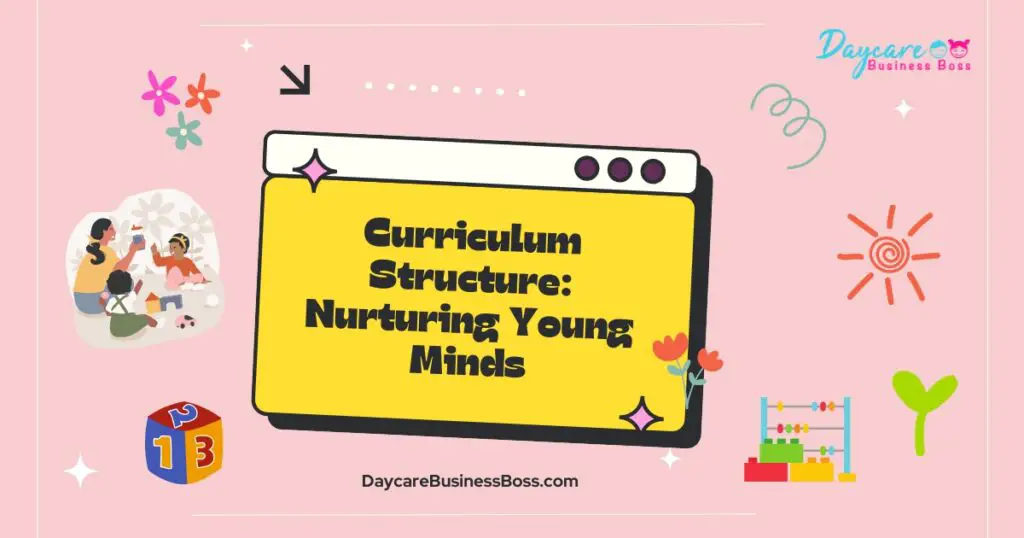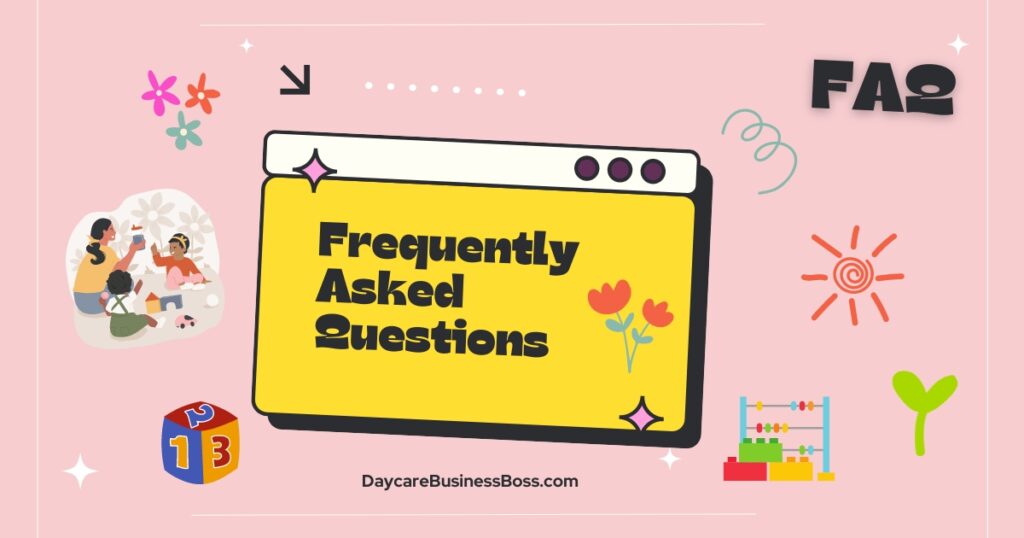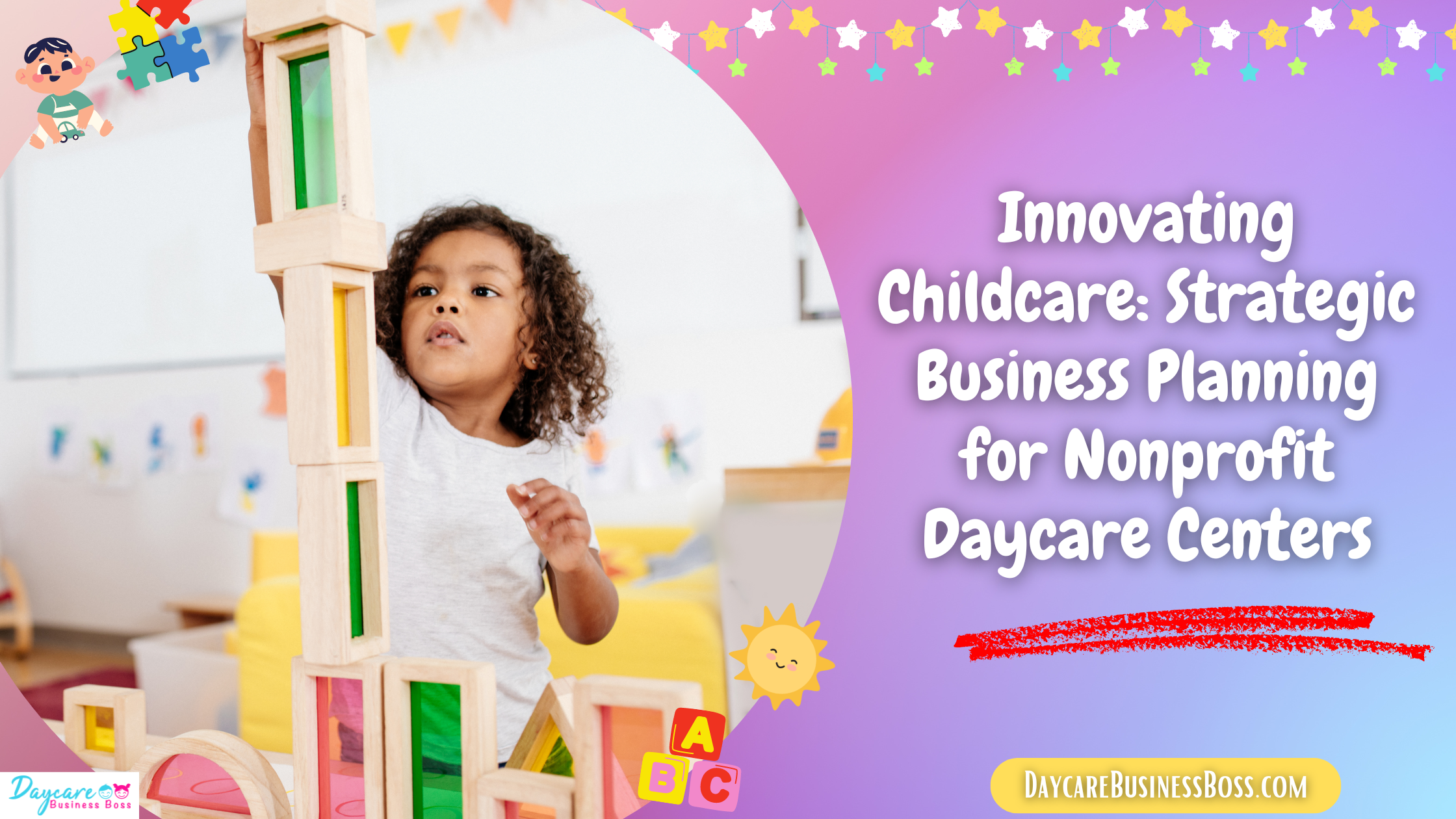The idea of a nonprofit daycare encompasses more than just the provision of child care; rather, it symbolizes a commitment to sculpting the next generation, cultivating community connections, and making important contributions to the general welfare of society. This endeavor is built on a solid foundation consisting of a well-structured business strategy, which outlines the path to achievement with clarity and intent.
To best ensure the effectiveness of a nonprofit daycare business plan, you should incorporate key elements like a clear mission, defined target demographics, staffing tactics, curriculum structure, safety protocols, fundraising techniques, budget allocation, partnership cultivation, and impact evaluation.
This article dives into the domain of nonprofit daycare business plans, analyzing the important factors that translate a vision into a reality, ensuring that each kid receives the highest quality care, education, and support while adhering to the values of a nonprofit model, and guaranteeing that a vision may be transformed into a reality.
A Clear Mission: Guiding the Path Forward
One of the most important aspects of an effective business plan for a charity daycare center is including a mission statement that has been carefully prepared. The relevance of the organization’s mission statement cannot be overstated because it serves as both a compass for the organization and a vehicle for conveying the organization’s guiding principles and primary goals to its many constituents. It is more than just words; it encapsulates the very core of the daycare’s goals and objectives while simultaneously building a deep connection with prospective clients and parents who are looking for a nurturing and exciting haven for their children. Its purpose surpasses just words.
A well-crafted mission statement has the unique capacity to condense complicated goals into a message that is short and powerful. It acts as a compass that directs the daycare’s decisions, actions, and strategic directions, ensuring that they are aligned with the organization’s overall mission. This statement serves as an effective medium for communicating the daycare’s fundamental principles, thereby creating confidence and credibility among the daycare’s varied audience, which includes parents, educators, members of the community, and possible donors.
When parents are looking for an atmosphere in which their children may thrive and grow, having a daycare that has a mission statement that resonates with them can serve as a witness to the daycare’s dedication to providing holistic development and unwavering care for the children enrolled there. The mission statement acts as a rallying point for potential supporters, urging them to spend their resources and time on a cause that stands for genuine change in early childhood education. In other words, the mission statement is a call to action.
Read more about: How to write your Daycare Mission Statement
Defining Target Demographics: Tailoring Services for Impact
Understanding the complexities of the demographics of the community that a daycare intends to serve is critical. A thorough understanding of the target audience guarantees that the center’s services are in sync with the unique needs and tastes of the locals. By defining a certain demographic, the daycare not only improves its capacity to provide specialized and relevant offers but also promotes itself as a vital part of the community’s fabric.
Whether it is addressing the needs of employed parents looking for dependable childcare solutions, extending support to single mothers who may require specialized assistance, or reaching out to families in marginalized neighborhoods with limited resources, tailoring the daycare’s services to correspond with the demographic makeup of the neighborhood cultivates a deeper resonance and more profound influence. This synchronization forges a fundamental link that goes beyond simple service delivery, establishing a better rapport and cultivating a sense of belonging within the community.
Strategic Staffing: Building a Dedicated Team
The growth of a charity daycare is intrinsically linked to the caliber and dedication of its personnel. The cornerstone of strategic staffing goes beyond simply recruiting competent employees; it requires the formation of a cohesive team that is motivated by a genuine desire to foster child development. A discerning approach is required, one that includes aspects such as maintaining optimal caregiver-to-child ratios, ensuring staff have appropriate qualifications, facilitating continuous training, and fostering a nurturing workplace environment that encourages professional advancement.
The caregiver-to-child ratio must be balanced to ensure customized attention and caring care. Aside from that, the credentials of the staff have a considerable impact on the level of education and care provided. As a result, a careful selection procedure that considers both qualifications and a real desire to improve the lives of young people is necessary.
In a field as dynamic as child development, the importance of continuous learning cannot be emphasized. Consistent training provides employees with the most up-to-date insights and approaches, ensuring that the daycare’s products stay cutting-edge and effective. Providing a supportive work atmosphere increases employee happiness and motivation. Staff employees are more likely to contribute their talents entirely when they feel respected and encouraged.
Curriculum Structure: Nurturing Young Minds

A carefully developed curriculum is the foundation of a nonprofit daycare’s educational structure. Its importance stems from its ability to steer the learning path in a way that is not only personalized to the child’s age but also captivates their interest, all while keeping to early childhood education principles. This endeavor’s growth is dependent on the combination of age-appropriateness, engagement, and conformity with educational requirements.
The daycare develops a learning environment that is perfectly suited to each child’s developmental stage by adapting the curriculum to certain age groups. This tailored approach not only guarantees that children are engaged and challenged to the best of their abilities, but it also improves their overall educational experience.
The incorporation of various instructional aspects improves the curriculum even more. A combination of play-based learning and traditional learning stimulates creativity and problem-solving while also cultivating a deep knowledge of subjects via hands-on experience. The development of social skills is equally important, as it provides children with the interpersonal tools they need for a thriving future. The implementation of planned study time provides a firm foundation for academic advancement by providing a balanced and comprehensive educational spectrum.
Safety Protocols: Ensuring a Secure Environment
The primary concern in every daycare setting is the safety and security of the children in its care. The painstaking application of comprehensive safety protocols acts as an impermeable shield, safeguarding not only the physical well-being of the children but also instilling trust and peace of mind in parents, all while adhering to regulatory norms. These safety precautions, which range from tight access and exit procedures to precise hygiene standards and meticulously planned emergency response plans, form a comprehensive framework that strengthens the community’s foundation of confidence and credibility.
Secure entry and leave processes serve as the first line of defense, ensuring that only authorized personnel have access to the premises and therefore minimizing potential dangers. Maintaining perfect hygiene habits provides a healthy atmosphere and protects children from illness and transmission. The actual test of a daycare’s commitment to safety, however, is its capacity to respond to unexpected emergencies. Emergency response plans that are well-structured ensure quick and effective action during crises, reassuring parents that their children are in skilled hands.
Fundraising Techniques: Sustaining Operations and Growth
The symbiotic relationship between fundraising and sustainability in nonprofit daycare centers is obvious. These centers usually rely on effective fundraising techniques to support not only their day-to-day operations but also their expansion plans. The armory of effective fundraising strategies includes a variety of ways, each deliberately geared to elicit support from a variety of sources. Grant applications are an important conduit for obtaining external funding from entities that support the center’s goal for early childhood education. Donor cultivation, both individual and institutional, resonates with the underlying ideals of community and collaboration, channeling financial support to a worthy cause.
Community events are more than just fundraisers; they are venues for meaningful engagement with the local population. These events bridge the gap between the center and its community, building solidarity while raising critical funds. The collaboration between daycare centers and local businesses results in a win-win situation. Daycare centers can tap into a resource pool that extends beyond economics by cooperating with local businesses, generating goodwill and broader community involvement.
Read more about: Ready, Set, License: How to Obtain a License for Your Daycare
Budget Allocation: Balancing Financial Sustainability
The development of a budget for a daycare facility is a critical step in achieving financial stability and sustainability. A carefully constructed budget serves as a roadmap that aligns with the center’s strategic goals and operational requirements. A prudent deployment of resources within this budget is critical, encompassing major components such as operational expenses, personnel salaries, curriculum materials, facility upkeep, and a contingency reserve.
The budget ensures that every aspect of the daycare’s functionality is accounted for by painstakingly mapping out running expenditures, from power bills to instructional supplies. Staff pay, which recognizes their critical role in the development of young brains, plays a crucial role in ensuring that their dedication is fairly and consistently recognized. Curriculum resources, which are at the heart of the learning journey, are a critical investment. Investing in the upkeep and enrichment of these materials ensures that educational programs remain engaging and powerful.
Another critical aspect is facility upkeep, which ensures a safe and suitable environment for both children and workers. A contingency fund protects the company from unforeseen events, emphasizing a practical approach to financial management. Transparent financial planning, along with strict accountability, sends a powerful message to supporters. This transparency builds trust by demonstrating that resources are utilized wisely and by the daycare’s objective.
Partnership Cultivation: Collaborating for Greater Impact
The power of collaboration and partnership reverberates as a catalyst for revolutionary influence in the arena of nonprofit daycare centers. Weaving a tapestry of partnerships with other nonprofits, community groups, local educational institutions, and corporations opens up a world of possibilities that magnifies the center’s impact. The attraction of collaborating with businesses that share the same beliefs and objectives is multifaceted, ushering in an era of resource synergies, collaborative events, and expanded community reach. These collaborations bring a slew of benefits. The exchange of resources, whether tangible or intangible, revitalizes the capacities of the center. Shared expertise, tools, and even persons help to enrich children’s educational experiences.
Joint events generated from these collaborations are a symbol of unity, displaying a vivid tapestry of interests and aspirations. Collaborative efforts blend varied viewpoints to produce events that have a profound resonance with the community, establishing stronger relationships and motivating collective engagement. Partnerships also create a ripple effect, expanding the center’s impact beyond its immediate area. The intertwined networks provide a mutual support system, amplifying the center’s influence while supporting the missions of its partners.
Impact Evaluation: Measuring and Improving Outcomes
The dedication to constant review, a cornerstone in the pursuit of effectiveness, is the gauge of a charity daycare’s growth. The development of detailed metrics to analyze children’s developmental progress, parental contentment, and community involvement emerges as a pillar for informed decision-making. A regular assessment rhythm builds an elaborate tapestry of advantages that extend well beyond the center’s boundaries.
The development of children, painstakingly watched through these measurements, provides insight into the growth of the daycare’s pedagogical approach. It reveals the nurturing effect on cognitive, social, and emotional development, encouraging educators toward informed modifications that improve the learning experience. Parental pleasure, a priceless indicator, reveals the center’s conformance with familial standards. Feedback collected from these measurements highlights strengths and identifies possible areas for improvement, strengthening the link between the center and its families.
Metrics for community participation reflect the daycare’s resonance in its surroundings. The center positions itself as a critical hub for communal growth and interaction by measuring the level of interaction and involvement. Regular evaluation serves as the pivot for agility. The daycare can re-calibrate its trajectory by using the insights gained from these data to correct inefficiencies and fine-tune its offerings.
Frequently Asked Questions

Why is a well-defined mission statement very necessary in the development of a business strategy for a charity daycare?
Your nonprofit daycare’s identity and its overall purpose may be traced back to its well-articulated mission statement, which serves as the organization’s guiding principle. It conveys clearly and concisely to prospective backers, parents, and other stakeholders the objectives, values, and goals of your institution. Not only does an articulated mission serve as a compass for your operations, but it also strikes a chord with parents who are looking for a supportive and educational setting for their children. It ensures that all parties engaged are by the overarching vision, thereby setting the tone for the activities that take place at your daycare.
How might partnerships improve the efficiency of a daycare that is run by a nonprofit organization?
When it comes to broadening a nonprofit daycare’s scope of influence, partnerships are essential. Developing a network of support and resources requires working together with other local nonprofit organizations, community organizations, educational institutions, and local companies. These relationships have the potential to result in combined events, the sharing of resources, and an increase in community involvement. Your daycare can expand its reach, gain access to more funding sources, and provide more complete services to the community if it collaborates with other organizations and leverages the assets of other groups.
What function does impact evaluation serve within the framework of a business strategy for a nonprofit daycare facility?
The evaluation of your nonprofit daycare’s impact is an essential component in determining how efficient the daycare is. You can monitor the developmental growth of children, gauge the contentment of their parents, and evaluate their participation in the community if you set clear metrics and assessment procedures. If you regularly evaluate the impact of your activities, you will be able to pinpoint areas that need improvement, make decisions based on accurate information, and highlight your accomplishments to stakeholders and possible donors. This method, which is driven by data, helps ensure that your daycare will continue to be in line with its objective and will continuously improve the services it provides.
To learn more on how to start your own daycare checkout my startup documents here.
The information provided by DaycareBusinessBoss.com (“The Site”) is for general informational purposes only. All information on the Site is provided in good faith, however, we make no representation or warranty of any kind, express or implied, regarding the accuracy, adequacy, validity, reliability, availability or completeness of any information on the Site. Under no circumstance shall we have any liability to you for any loss or damage of any kind incurred as a result of the use of the Site or Reliance on any information provided on the Site. Your use of the Site and your reliance on any information on the Site is solely at your own risk.
This blog post is for educational purposes only and does not constitute legal advice. Please consult a legal expert to address your specific needs. Terms and Conditions. (https://daycarebusinessboss.com/terms-conditions/)

Meet Shawn Chun: Entrepreneur and Childcare Business Fan.
I’m a happy individual who happens to be an entrepreneur. I have owned several types of businesses in my life from a coffee shop to an import and export business to an online review business plus a few more and now I create online daycare business resources for those interested in starting new ventures. It’s demanding work but I love it. I do it for those passionate about their business and their goals. That’s why when I meet a childcare business owner, I see myself. I know how hard the struggle is to retain clients, find good employees and keep the business growing all while trying to stay competitive.
That’s why I created Daycare Business Boss: I want to help childcare business owners like you build a thriving business that brings you endless joy and supports your ideal lifestyle.

